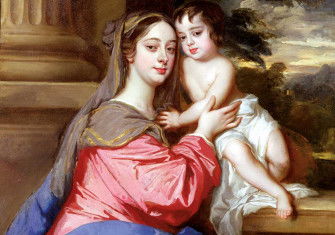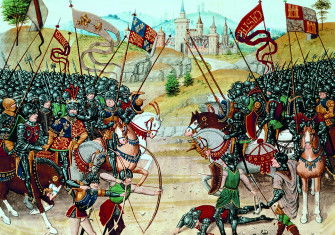‘The Lost Queen’ by Sophie Shorland review
The Lost Queen: The Surprising Life of Catherine of Braganza, Britain’s Forgotten Monarch by Sophie Shorland returns the consort to her rightful place in Restoration history.

Charles II’s Restoration court has long been associated with hedonism and frivolity. Lurking in the shadows – at least in history books – was his long-suffering wife, Catherine of Braganza, often remembered (if remembered) for being forced to put up with her husband’s many mistresses. In the title of Sophie Shorland’s new biography she is described as a queen both ‘lost’ and ‘forgotten’ – an accurate statement, even if it is strangely reiterated.
Born in Portugal in 1638 as a member of the influential Braganza family which seized back the throne from the Spanish Habsburgs in 1640, Catherine spent 30 years in England. Married to Charles II in 1662, their reign bore witness to major scientific and medical developments alongside Britain’s overseas expansionist activities, aided by the lucrative trade links that the kingdom inherited through the Anglo-Portuguese Alliance of 1661, confirmed by their marriage treaty. In The Lost Queen Shorland seeks to redress Catherine’s absence from Restoration history by giving her an up-to-date biography, building on recent research by scholars including Peter Leech, Edward Corp, Adam Morton and Lorraine Madway.
What we get is a vivid picture of how, as queen consort, Catherine bore the rebuffs she received politically and socially among certain factions of the court, and how she ultimately rose to become a prominent figure in her own right, independent from the satellite courts that functioned around Charles’ mistresses: the impetuous Barbara Palmer, née Villiers, Lady Castlemaine; the actresses Nell Gwynn and Moll Davis; and Louise de Kéroualle, duchess of Portsmouth. Catherine achieved this through her patronage of musicians and of the Flemish artist Jacob Huysmans, who depicted the queen as her namesake St Catherine of Alexandria in a portrait that was duplicated by other prominent female courtiers, including Barbara Palmer, Lady Castlemaine. Interestingly, given that Castlemaine has long been considered Catherine’s nemesis, Shorland argues that this was in fact intended as a mark of respect and friendship with the queen, but more work is needed to discern the extent to which this is true, especially given the lack of written evidence by either woman. Nevertheless, The Lost Queen raises questions about how we should think about the relationship between queens consort and royal mistresses in the early modern period. Were those relationships always a straightforward rivalry? How did queens assert their authority? Could a cordial compromise be reached for harmony between both parties?
Shorland’s use of a vast range of primary printed material helps the reader to gauge the political and social mood in late 17th-century Britain, and to understand how Catherine, Charles and the moral excesses of his court were viewed by the public. Contemporary diaries, letters and memoirs by courtly figures who knew Catherine, including diarists Samuel Pepys and Sir John Reresby as well as the French courtier Count Philibert de Gramont, shed light on the queen’s personality: serious, but also someone who enjoyed dancing and cards, and who was devoted to the king. They also reveal how she eventually won respect from those who had initially dismissed her with her moral principles and religious piety – including her husband.
It was through Charles’ marriage to Catherine that Britain’s transnational ambitions were realised; having gained Bombay and Tangier as part of the marriage treaty, as well as trade links with Brazil and other American territories, Britain’s place was secured on the global stage. During times of heightened political and religious tension, enemies of the king used Catherine’s Catholicism as a weapon against him. This overflowed into the public domain when Catherine was accused of being involved in the so-called ‘Popish Plot’ to assassinate Charles in 1678. Whigs and Tories alike sought to use the fallout not only to pressure the king to divorce Catherine and remarry so that he could secure the throne through a legitimate heir (Catherine suffered many miscarriages throughout their marriage), but also to exclude his brother, the future James II, from inheriting the throne, because of his conversion to Catholicism. In response, Catherine appealed to her motherland, prompting Portugal to dangle the terms of the Anglo-Portuguese alliance over Britain as a – successful – threat. Charles for his part always made it clear that he would not divorce Catherine, despite pressure to do so.
Widowed in 1685, Catherine lived through immense political uncertainty when James fled the throne in 1688 and was replaced by his daughter and son-in-law, Mary II and William III, as joint monarchs. Returning to her homeland in 1693 having left England in 1692 on a long European tour, Catherine remained in Portugal until her death in 1705 having served twice as regent for her nephew, the future João V.
Catherine’s marriage, cultural patronage and diplomacy permanently shaped Britain’s maritime and imperial aspirations on the global stage. For this she deserves far more recognition than she currently receives, and Shorland’s biography goes a significant way towards rectifying that oversight. This makes it all the more regrettable that the book contains persistent (and serious) errors. One such mistake is her date of birth – given as 1640 in the opening pages instead of 1638 – which leads to inconsistencies throughout the text, particularly in discussions of Catherine’s attempts to conceive a legitimate heir in the later 1660s. Sir Richard Bellings is erroneously described as Catherine’s ‘confessor’; in fact, Bellings was the queen’s secretary and was married to the daughter of one of the premier English Catholic families – the Arundells – although later in the book his correct title is given. These errors aside, The Lost Queen succeeds in its aim of restoring Catherine to her rightful place at the centre of Restoration history.
-
The Lost Queen: The Surprising Life of Catherine of Braganza, Britain’s Forgotten Monarch
Sophie Shorland
Atlantic Books, 400pp, £25
Buy from bookshop.org (affiliate link)
Eilish Gregory is the Little Company of Mary Fellow in the Centre for Catholic Studies at Durham University and the author of Later Stuart Queens, 1660-1735: Religion, Political Culture, and Patronage (Palgrave Macmillan, 2024).






